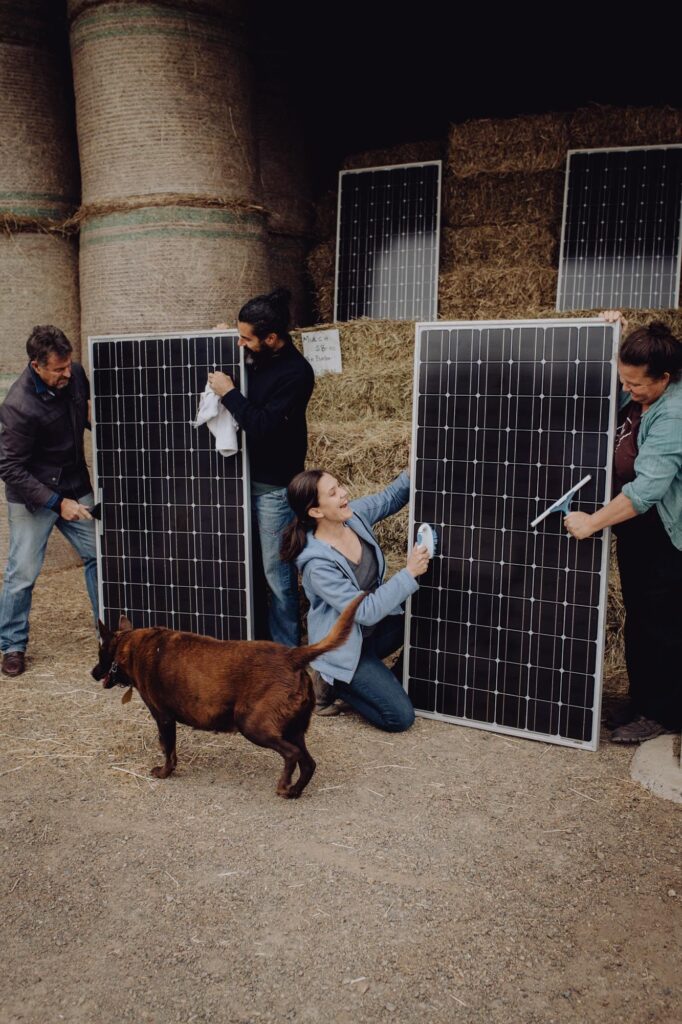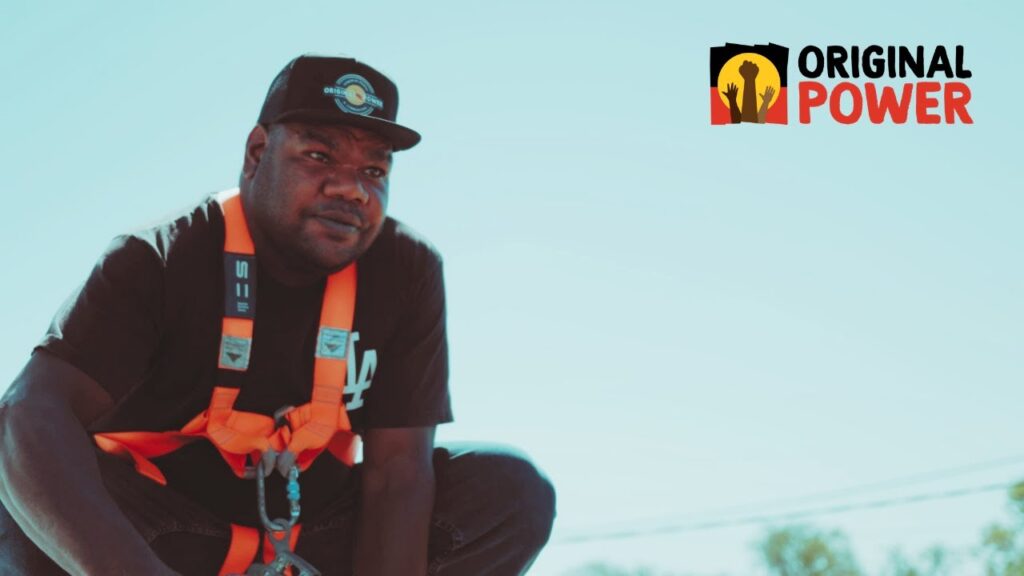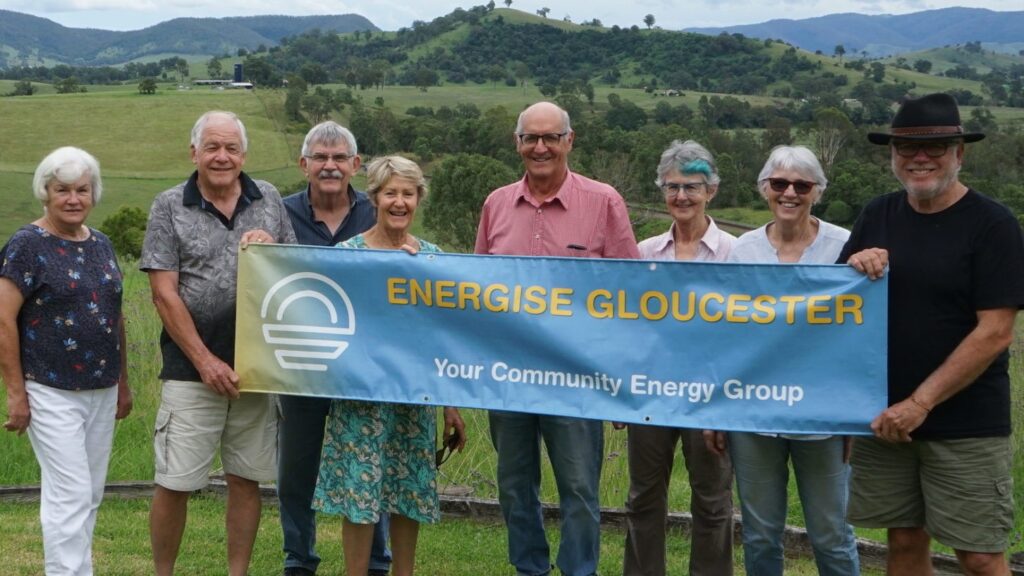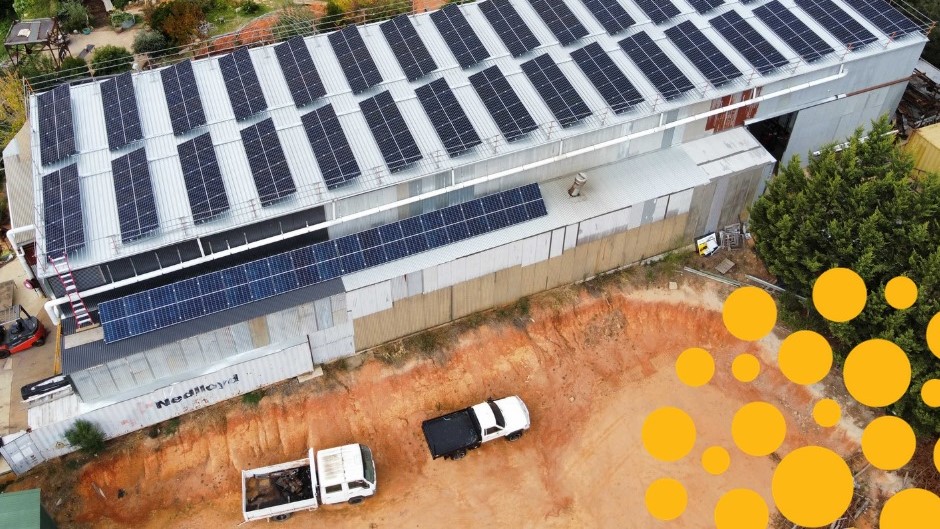The renewables boom is coming to Australia in a big way, and we have a once-in-a-lifetime opportunity to ensure that everyone benefits in this transition.
Well over 6 million people live under solar roofs and already over 100 innovative community energy groups have sprung up across the nation.
There are thousands of Australians willing and able to get local renewable energy projects going in their communities, particularly in rural and regional areas. From farmers to local councils, community groups to small business; a range of actors are looking to participate and benefit from the transition to clean energy.
Diverse and grassroots participation in community energy projects will not only speed up the transition to clean energy in Australia, it will build social and political support for doing so.
However, these volunteers often lack the crucial combination of legal, technical and financial support necessary to deliver these projects.
This means communities are missing out on local jobs and opportunities to reduce power bills while cutting greenhouse gas emissions. Some people are missing out on the clean energy boom all together.
Community Power Hubs leverage the efforts of existing volunteers, willing contributions from the private sector and community enthusiasm for renewables, to support all Australians to access innovative and emerging energy technologies such as solar and battery storage.

What is a Community Power Hub?
Community Power Hubs provide the coordination, expertise and funding needed to implement clean energy initiatives.
They leverage existing on-the-ground organisations, and provide dedicated staff with technical, legal, community engagement and finance expertise working to develop partnerships with councils, funders, technology providers and other stakeholders to deliver a range of new renewable energy business models.
Already we have evidence of the value of this approach. Sustainability Victoria’s two-year trial of three regional Community Power Hubs delivered 15 community energy projects, 1.35MW of renewable energy and generated $14.5 million of value equating to a 13-1 leverage of government investment.
They can also provide an important regional role for other community stakeholders, offering support and advice to landholders, small businesses, community groups and others to take up renewable energy and energy efficiency initiatives.
Hubs connect to regional institutions, such as councils and regional development organisations, and deliver programs relevant to their region.
We highly recommend that any regional Hubs should be connected through a national Smart Energy Communities Network, to ensure that the lessons learnt in one region do not have to be re-learnt elsewhere.
How does a Community Power Hub work in practice?
Community Power Hubs can operate and support a region in many different ways. One situation may be like this:
- A local volunteer group wants to develop a community energy project but doesn’t know where to start
- They contact the Hub in their region to discuss their ideas and work up a proposal
- The Hub takes the proposal to their advisory committee (made up of representatives from council, state government, passionate locals, energy experts and local businesses)
- If approved to proceed by the advisory committee, the Hub provides support in assessing the feasibility of the project, developing technical and finance options and recommending next steps for the project
- The Hub continues advice and support to the local group throughout implementation and evaluation of the project
Make Community Power Hubs a reality
Australia can be a renewable superpower – and this one-in-a-generation opportunity must be offered to communities. Community Power Hubs would help ensure that all Australians, no matter what they earn or where they live, are able to take control of their power bills and access affordable, clean and renewable electricity.
We’re calling for federal and state energy ministers to work together and establish 50 Community Power Hubs around the country.
Let your voice be heard and email your state energy minister. We’ve made it easy and drafted it for you, all you’ve got to do is fill out your details and click send!
For more information about our proposal for a national roll-out of Community Power Hubs, read our policy briefer.
The start of what’s possible – community energy success stories
People power builds energy autonomy and community resilience. From Gloucester and Moruya in NSW, Apollo Bay and Yackandandah in VIC, and Marlinja in NT, these community energy projects are lighting the way for every town and suburb around the country. Community Power Hub funding would ensure the longevity of projects like these.
Apollo Bay microgrid, VIC
Nestled between the pristine Otway forests and the sea, the small town of Apollo Bay is a paradise for locals and tourists alike. But remote often means unreliable power – with up to 70 blackouts a year hurting local businesses during peak tourism season.
A group of local volunteers are countering that with community energy. In 2022 they worked with their Victorian Government-funded Community Power Hub to plan for an islandable microgrid powered by solar, wind and a neighbourhood battery.
Moruya Bushfire and Heatwave Havens, NSW
Like many towns along Australia’s east coast, Moruya was hit hard by the 2019/2020 Black Summer bushfires. Enter the South Coast Health and Sustainability Alliance (SHASA), a small group of volunteers with big ideas.
They are equipping local community buildings like the Anglican Church, Country Women’s Association hall and Community Preschool with solar, batteries and other upgrades to make them safer places for locals during heatwaves and other extreme weather events.


Marlinja community solar, NT
The remote community Marlinja in the Northern Territory has powered their community centre with solar becoming the first community energy project in the NT.
Uncle Ray Dimakarri Dixon, a Mudburra leader and Marlinja resident says: “Solar power built and owned by the community offers us the chance to live and work on country, create good skilled jobs for our young people and help our communities prepare for a hotter, less certain climate future.
The solar powered community centre is just the start for our people, to demonstrate to the government that we need to be leading the switch to clean energy. We’re not waiting, and neither should they!”

Gloucester neighbourhood centre solar, NSW
Located in the Hunter Region, the town of Gloucester wanted to embrace renewable energy locally. Their first project was installing a 30kw solar system on the Buckets Way Neighbourhood Group Centre to lower energy costs for the important community hub.
Energising Gloucester raised the installation funds and co-ordinates the first three years of the project, then the centre can expect to save at least $11,000/yr on their electricity bills.
This passionate group are currently working on a 500kW solar farm to be owned by a cooperative of local people.

Totally Renewable Yackandandah, VIC
In Victoria’s north-east you’ll find one of Australia’s most ambitious community energy groups. Their vision is for Yackandandah to be powered by 100 percent renewable energy by 2022 – and they’re well on the way!
Over 60 percent of local buildings have solar -many with storage, 191 buildings are contributing to their three mini-grids and the community electricity retailer Indigo Power ensures as much as possible of money paid for electricity stays local.
TRY’s efforts were recognised by winning the 2020 Premier’s Sustainability Award for their community virtual power plan.